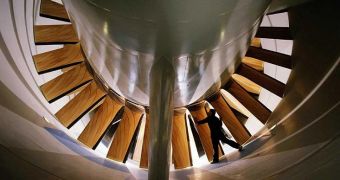Even though the faith of Project Constellation is in doubt, engineers at the NASA Ames Research Center are still continuing their investigations on how to make the Orion Crew Exploration Vehicle safer. At this point, the space capsule is destined to serve only as an escape pod on the International Space Station (ISS), in case of an emergency. But it was originally destined to serve as the replacement for the American space shuttles, which are scheduled to be retired by the end of this year, or by early 2011 at the latest.
There is however a chance that Orion will receive continued funding in its current configuration, without stripping it down to a lesser form. The Project will continue to receive funding throughout 2010, and so Ames aerospace engineers keep on working. As part of their trials, they recently conducted a series of investigations of the Launch Abort System (LAS) that will go on Orion. This system plays a very important role on the capsule, as it makes it separate from the booster carrying it in case something goes wrong. The Ames team developed a six-percent scale model of the Orion capsule, featuring very complex moving parts, and placed it inside a wind tunnel for testing.
“Simulating launch aborts will help us explain the complex interaction between the plumes from the smaller attitude control motor and the larger abort motor. This is the most intricate wind tunnel model the Orion team has developed and the data we obtain will go a long way toward defining the aerodynamics of the Orion spacecraft during ascent,” explains aerospace engineer and Ames team leader Jim Ross. Researchers are going through all this effort to make the LAS exquisite at its job for a very simple reason – the entire Orion capsule was built around a single concept, which is astronaut safety.
“Our team at Ames Research Center conducts simulations that help us develop assured launch abort technology and resolve complex aerodynamic interactions. The teams work greatly contributes to ensuring the safety of the astronaut crew throughout the entire mission. The launch abort system wind tunnel tests were a major factor in the development of the LAS and the recent successful Pad Abort 1 flight test,” NASA Johnson Space Center Orion Project Office manager Mark Geyer says. In addition to the Ames crew, NASA experts in Houston and at the Langley Research Center, in Virginia, are also involved in wind tunnel tests essential for the Orion program, SpaceRef reports.

 14 DAY TRIAL //
14 DAY TRIAL //